1. The Picture of the Ode of the River Goddess
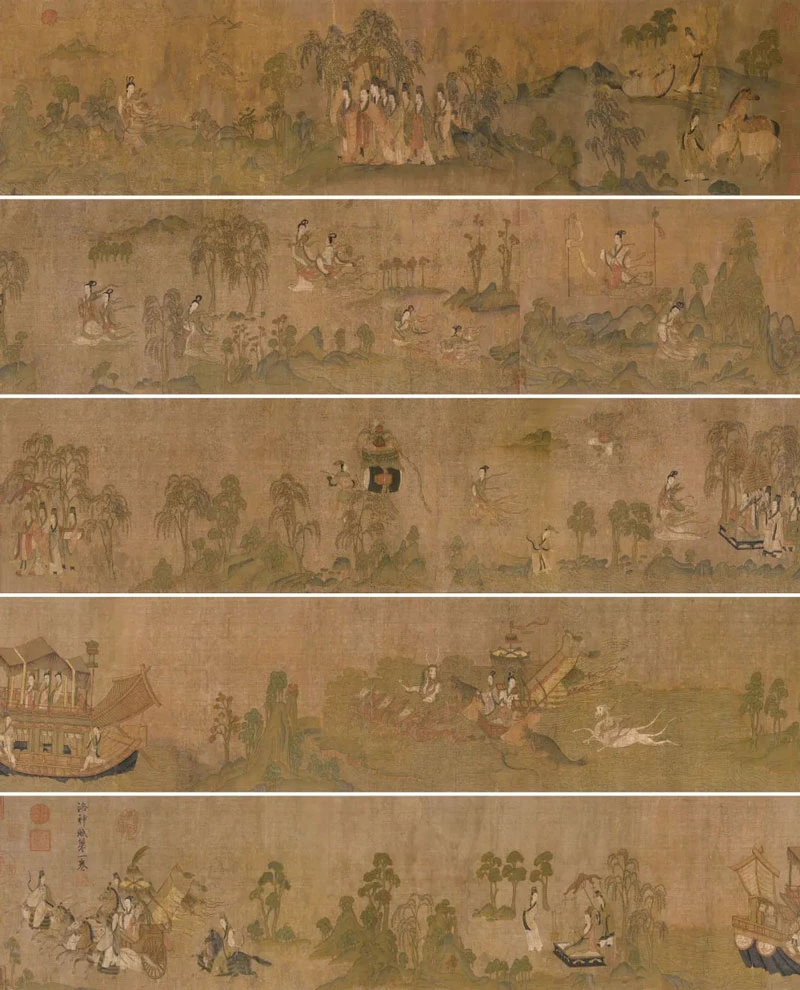
The Picture of the Ode of the River Goddess, The Palace Museum in Beijing
The Wei and Jin dynasties, the most elegant era in Chinese history, were full of poems and famous scholars, leaving behind countless brilliant literary works. Cao Zhi's Luo Shen Fu (洛神赋) is one of the most brilliant pieces. This long poem, about a traveler who meets a goddess on the shores of the Luo River, but who eventually parts from her because of the difference between the gods and the people, has its roots in the great poetic tradition of the Chinese people, but also contains the romance of Chinese native mythology.
The poem Luo Shen Fu was depicted by another legend of the Wei and Jin dynasties, the painter Gu Kaizhi (348-406), in the form of painting: "The Picture of the Ode of the River Goddess". Since then, from poetry to painting, "The Picture of the Ode of the River Goddess" has been permanently engraved in the memory of Chinese people and sublimated into an immortal cultural symbol.
2. Emperor Taizong Receiving the Tibetan Envoy
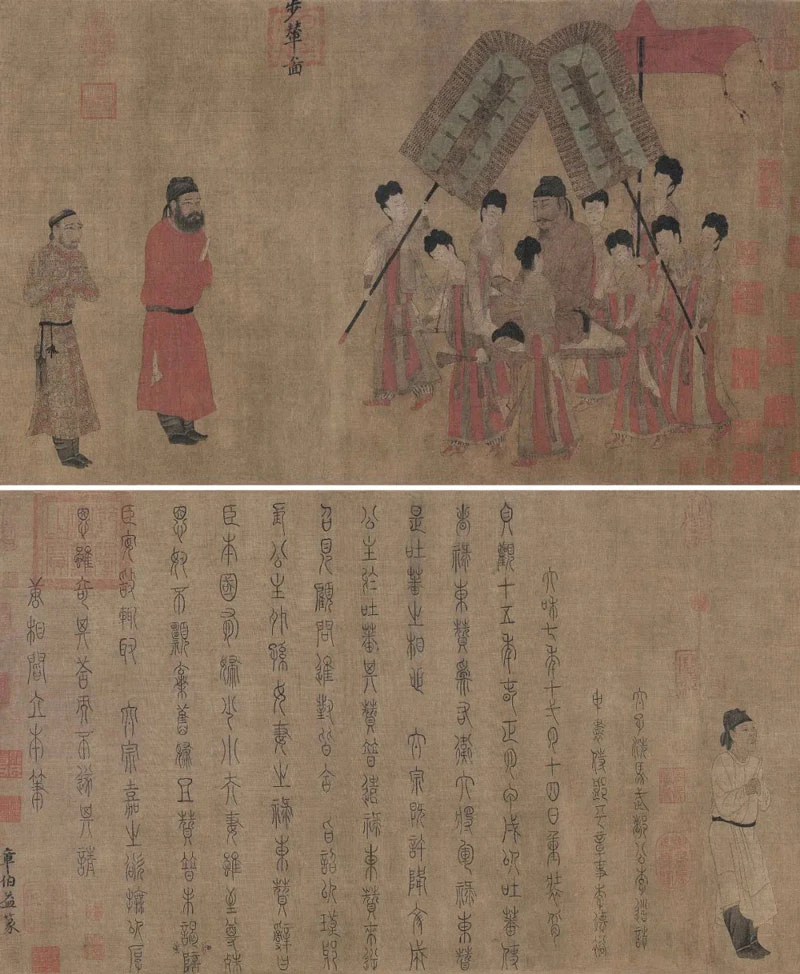
Emperor Taizong Receiving the Tibetan Envoy, The Palace Museum in Beijing
One thousand four hundred years ago, during the reign of Emperor Taizong of the Tang Dynasty, Songtsen Gampo, an admirer of the prosperous Tang Dynasty, sent an emissary to Chang'an, hoping to marry Princess Wencheng as a sign of the eternal union between the two tribes.
The scene of Emperor Taizong receiving the messenger was recorded in the painting scroll by Yan Liben (601-673), a chancellor who was good at painting, leaving behind the famous painting "Emperor Taizong Receiving the Tibetan Envoy".
This painting scroll from the Tang Dynasty is now collected in the Palace Museum in Beijing. It is an ancient testimony of the close friendship between the Chinese and Tibetan communities, and also highlights China's cultural tradition of harmony and good neighborliness.
3. Five Oxen
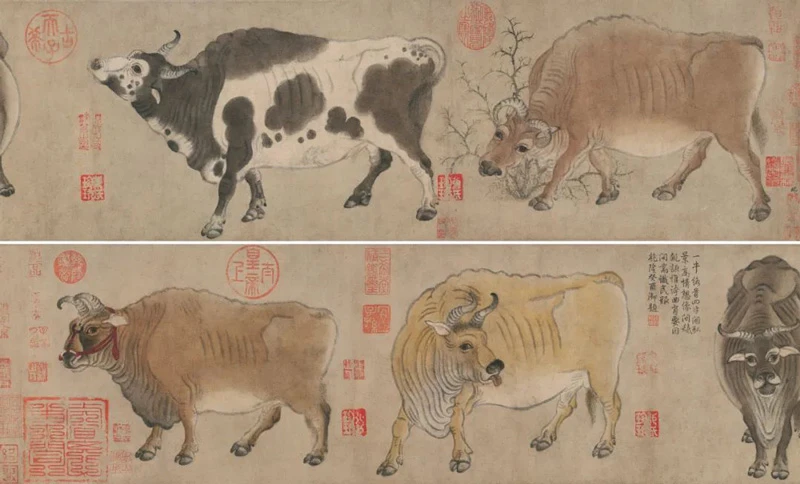
Five Oxen, The Palace Museum in Beijing
The Chinese people, who originated from the Yangtze and Yellow rivers, have a tradition of farming and have developed a cooperative, hard-working and simple nature. The cow, which are used for farming, occupy a place in Chinese culture as an important livestock.
The cows were praised for their kindness and hardship, and they also mapped the character of human beings. For this reason, Han Huang (723-787), a Tang Dynasty chancellor known for his paintings, painted the "Five Oxen". As a well-deserved national treasure, "Five Oxen" is the oldest surviving painting on paper in China and one of only a few authentic Tang paintings in existence.
4. Travelers among Mountains and Streams
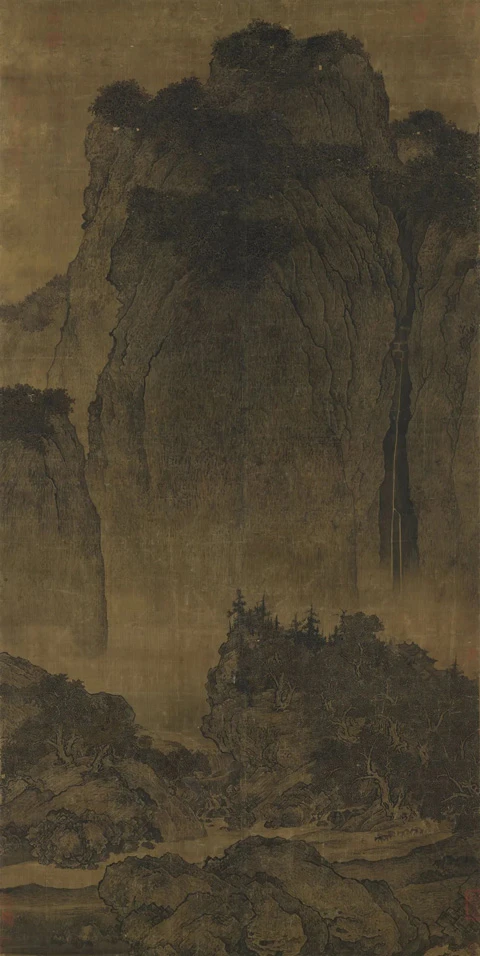
Travelers among Mountains and Streams, National Palace Museum in Taipei
The legacy of Confucianism, Taoism, and Buddhism continues today. Confucianism puts filial piety first and treats people with benevolence; Buddhism believes in cause and effect and has compassion; Taoism esteem effortless action, follows nature, and does not argue.
The ideas of the three schools of thought have been merged into a masterpiece. Northern Song Dynasty Fan Kuan's "Travelers among Mountains and Streams", a treasure of the National Palace Museum in Taipei, is regarded as the first divine work of Song painting.
The composition of the painting evolved from the Buddhist sutra paintings of the Sui and Tang dynasties, the near and distant scenes are reduced in size and enlarged in the center to create a sense of solemnity; the arrangement of the scenery is derived from the Confucianism of orderly order of the elders and the young, and the mountains are clustered in the hall as if they were venerated teachers; the mood of the painting comes from Taoism.
Fan Kuan's magnificent landscape expresses the sublimity of nature and contrasts with the insignificance of man, thus showing the unique Chinese cultural view of heaven and earth.
"Travelers among Mountains and Streams" is a monument that stands at the pinnacle of Song Dynasty art. The towering mountains in the painting are the lofty heights to which we always aspire, and we are like the small travelers at the foot of the mountains: we always believe in our own footsteps despite the distance.
5. Five Horses
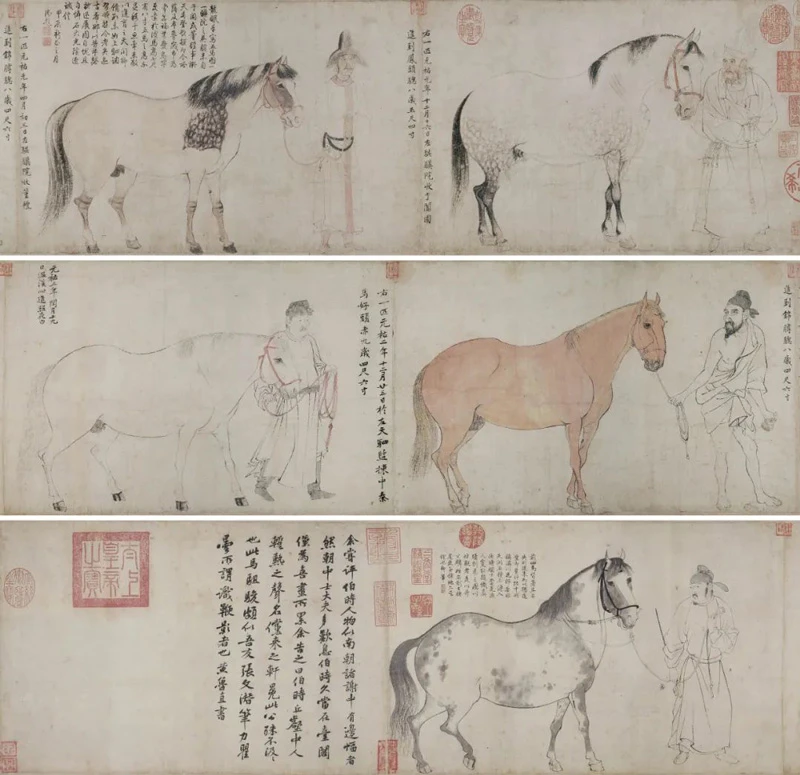
Five Horses
Line is the original language of Chinese painting and the highest realm. Using the variations in thickness of the line and the rhythm of the brush, the Chinese ancients created countless vivid masterpieces, the most culminating one being "Five Horses" by Li Gonglin of the Song Dynasty.
Li Gonglin learned his painting technique from Wu Daozi, the Saint of Painting, who was also a master of line drawing. In "Five Horses", Li Gonglin's lines not only outline the shape of the horses, but also give a sense of volume and three-dimensionality to the horses' bodies, feeling their bones and muscles.
At the same time, influenced by his friend Su Shi, Li Gonglin's painting style is simple, elegant and indifferent. Under his brush, the five famous horses of the western regions are dignified and elegant, perfectly integrating the aesthetics of the literati with the art of line, reaching the ultimate.
6. Along the River During the Qingming Festival
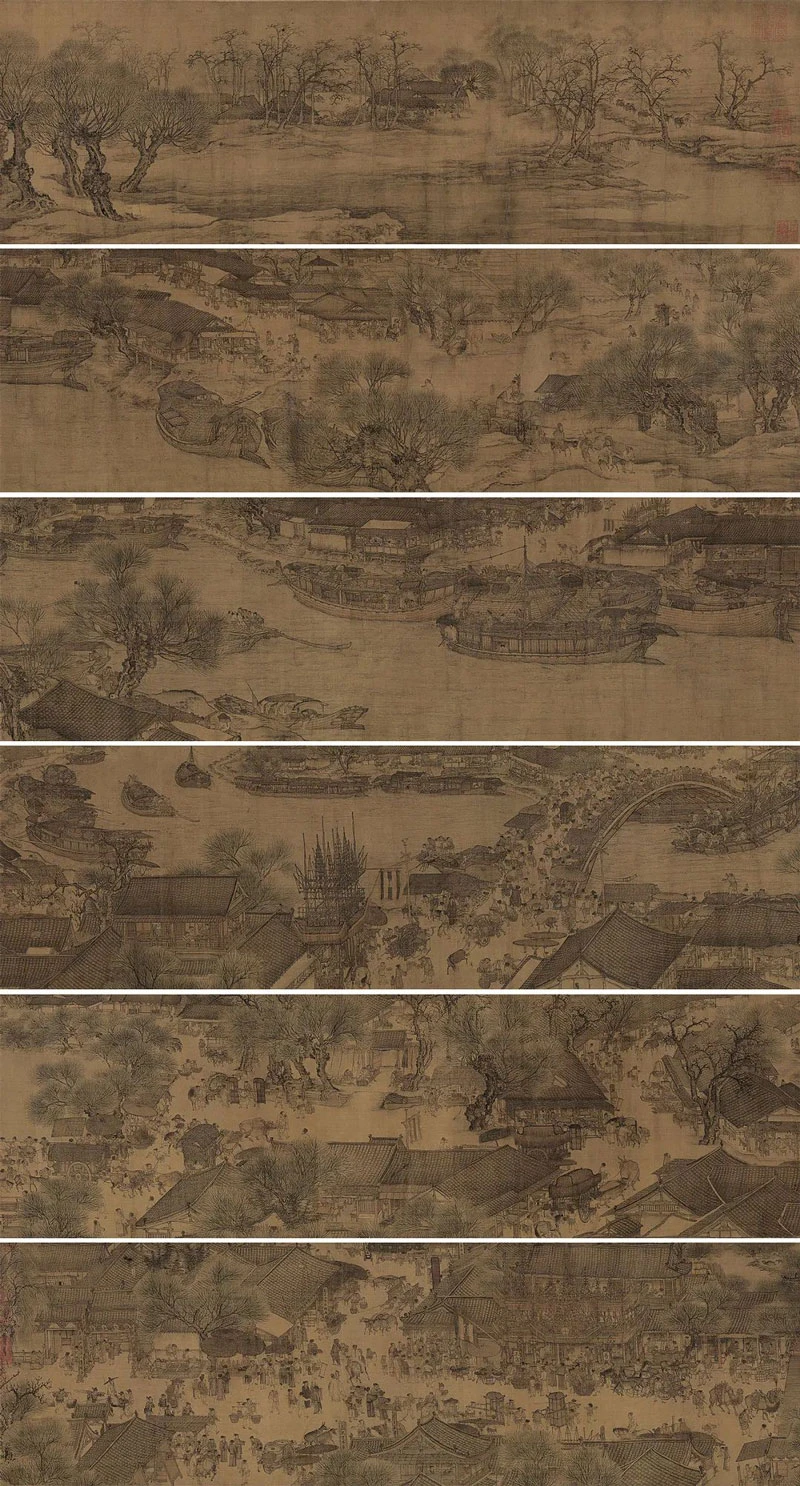
Along the River During the Qingming Festival, The Palace Museum in Beijing
During the Northern Song Dynasty, the population of ancient China was once close to 100 million, accounting for 40% of the world's population at that time; at the same time, unlike the Tang Dynasty, the Northern Song Dynasty was lax in managing the common people, allowing free movement, assembly and trade, and the economy was prosperous as never before. The capital city of Bianjing became the center of the world in the 10th century AD.
In order to record the prosperous scenery of people's livelihood and the city, Zhang Zeduan, a painter of Northern Song Dynasty, painted the familiar masterpiece "Along the River During the Qingming Festival", which shows Bianjing with many bridges and stores from outside to inside the city.
The sound of hawking, yelling, horses' hooves, ox carts, paddling, bargaining, camels' noses and dogs' barking in the street corners, restores the people's life in that era and indicates the unchanged simple wish of this land in China for thousands of years: to live and work in peace and prosperity.
7. A Thousand Li of Rivers and Mountains
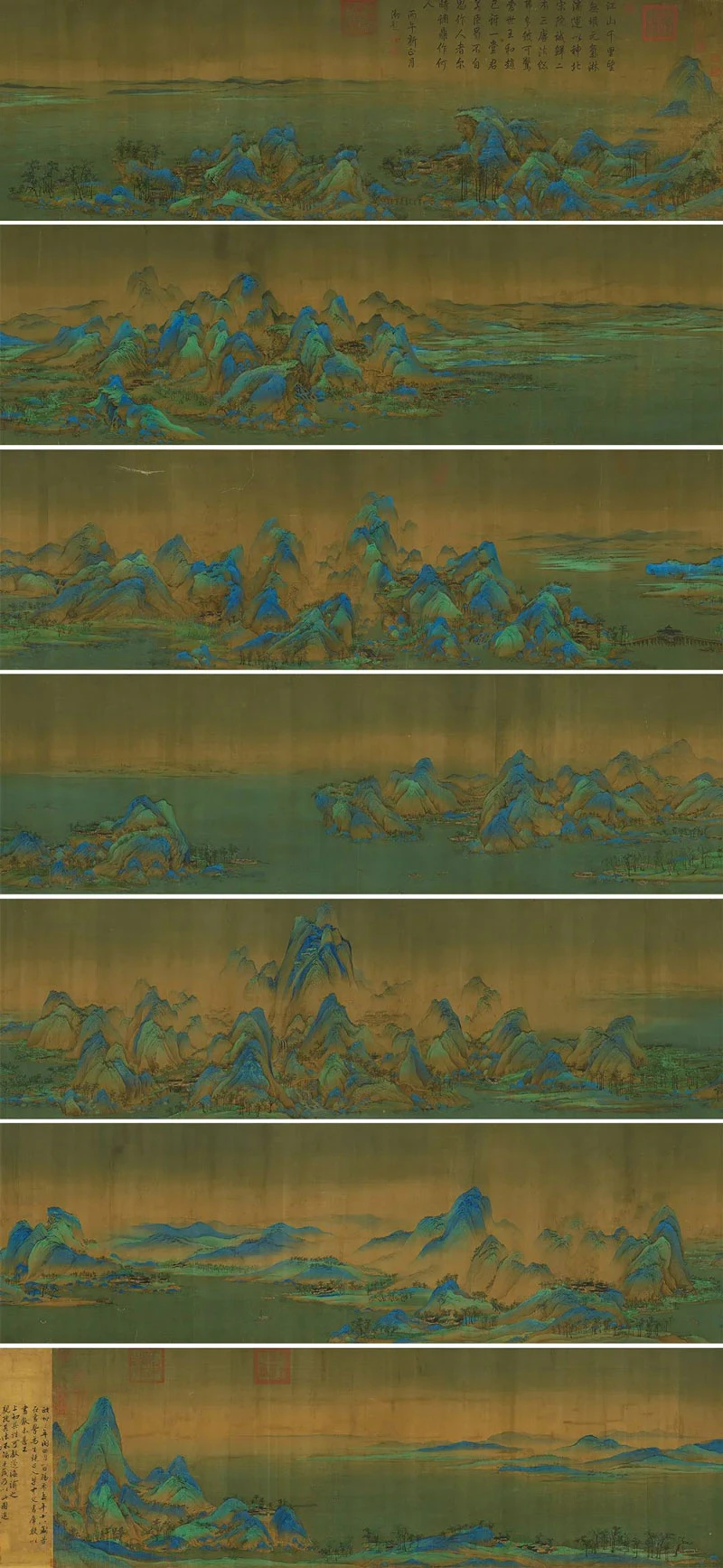
A Thousand Li of Rivers and Mountains, The Palace Museum in Beijing
Greenish green, a color made of blue copper ore ground with malachite, is abundant in the western regions, but has become a representative of Chinese colors. The ancients used these two magical colors to reproduce the natural world they longed for in their paintings. For them, the relationship between man and nature is precisely the use of these two colors to communicate, exchange and unite with each other.
In 1113 AD, under the guidance of Emperor Huizong, Wang Ximeng, a young man of the Northern Song Dynasty, painted "A Thousand Li of Rivers and Mountains", a 10-meter-long scroll with green as the main color, perfectly integrating human dwellings with the landscape, with buildings seemingly becoming part of the mountains and rivers, truly fulfilling the ideal of the unity of heaven and man in the painting.
8. Nine Dragons
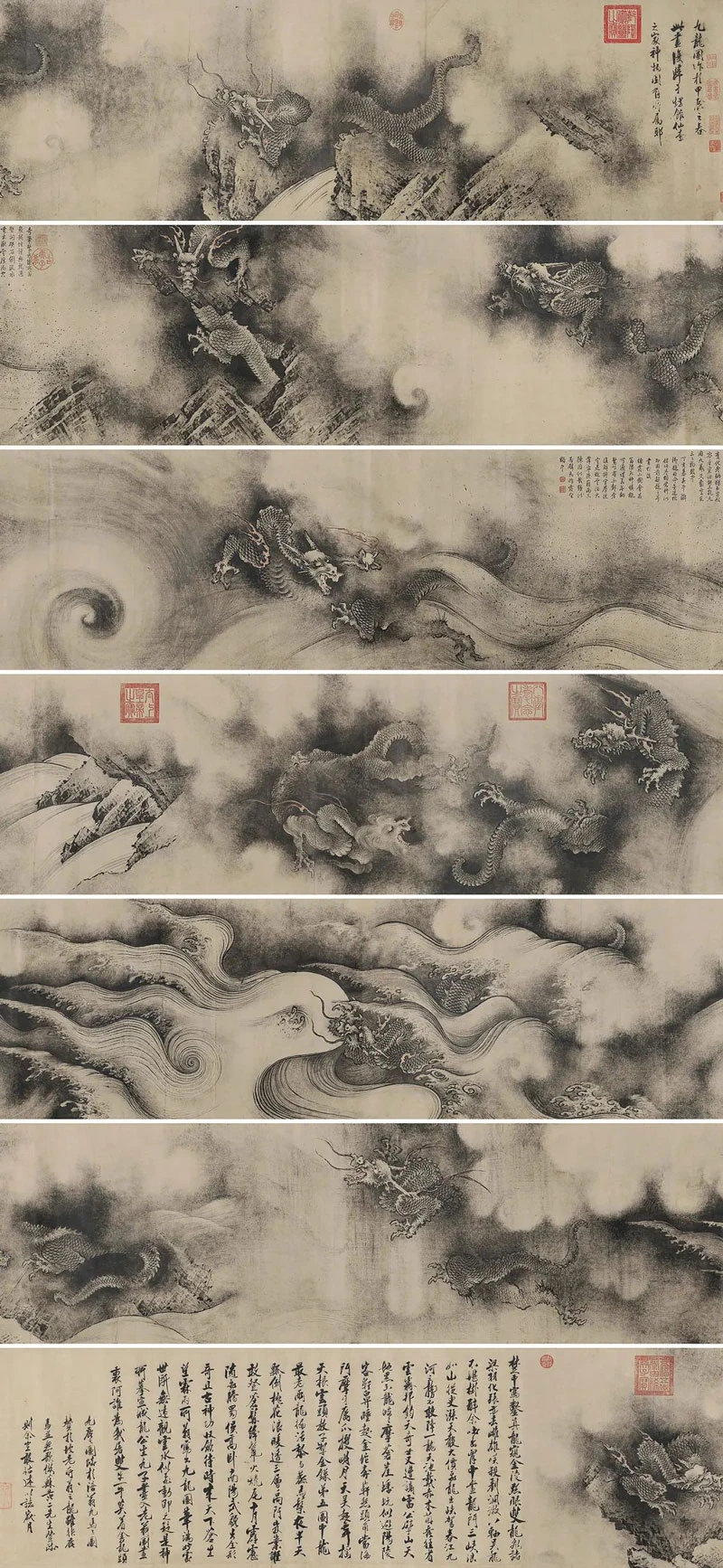
Nine Dragons
The Chinese people are the descendants of the dragon, and the dragon is also an enduring subject of Chinese painting. Among the dragon paintings of the past generations, the most impressive dragon painting with the highest artistic achievement belongs to Chen Rong's "Nine Dragons" in the Southern Song Dynasty.
From the beginning to the end of the scroll, Chen Rong depicts nine dragons in different forms, either emerging from the wind and waves, or hidden in the clouds and mist, or climbing under the rocks, with sinuous movements, lofty forms and claws.
Using only ink and wash and no color, the artist makes us feel that the dragons' movements are unpredictable and changeable, and creates a vivid stage for them: tumbling clouds and waves, turbulent mountain streams, and diffuse smoke.
Thus, the supreme totem of Chinese culture soars between the clouds and ink under Chen Rong's brush, and he uses the extraordinary momentum of the dragons and their divine movements to signify his ambitious ideals and pursuits, which finally makes "Nine Dragons" as a pearl of Southern Song painting, still shining today.
9. Dwelling in the Fuchun Mountains
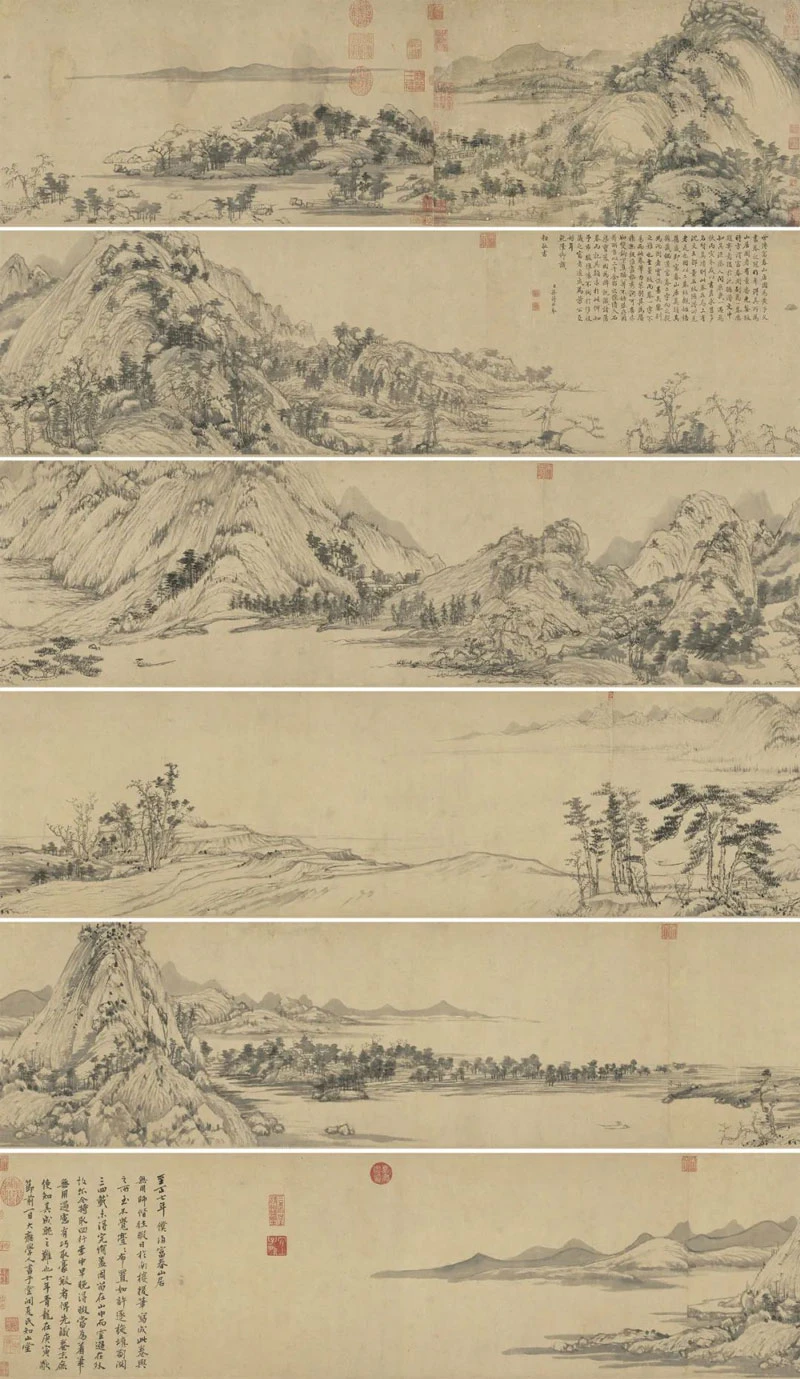
Dwelling in the Fuchun Mountains
In southern China, there is a river named Xin'an River in the upper reaches and Qiantang River in the lower reaches, and the picturesque section in the center is called Fuchun River. Seven hundred years ago, Huang Gongwang, a Yuan Dynasty painter, lived here and spent seven years depicting the scenery of the Fuchun River before finally painting "Dwelling in the Fuchun Mountains".
The painting, which is a household name in China, uses only light ink strokes and lines that look like a jumble of scattered linen to reveal a beautiful and eternal river, which passes through rapids and shallows, through peaks and valleys, ebbing and flowing like life, and finally the prosperity falls away, leaving only poetry and endless sentiments like the wind.
Because the scroll was so fascinating, its owner in the Ming Dynasty wanted to burn it before he died and take it to another world. Fortunately, someone stepped in to help, and the scroll was burned into two sections. One section is the head of the scroll, which is shorter and is now a treasure of the Zhejiang Provincial Museum; the other section is longer and is the collection of the National Palace Museum in Taipei.
10. Six Gentlemen
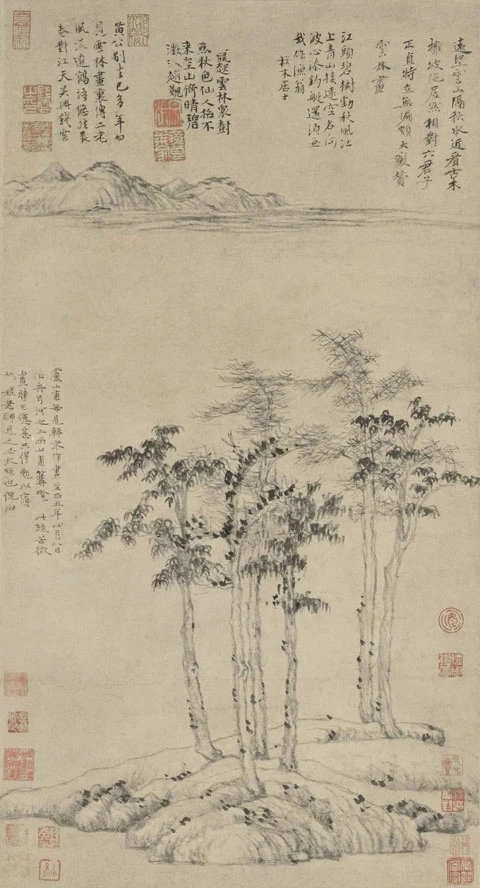
Six Gentlemen, Shanghai Museum
In Chinese culture, the highest personal pursuit is the gentleman, and the most important thing about the gentleman is his excellent character and noble personality.
Confucius compares a gentleman to an orchid, Zhou Dunyi's "Sayings of the Lotus" compares a gentleman to a lotus flower, and in the writing of Ni Zan, a Yuan Dynasty scholar, a gentleman becomes six trees: pine, cypress, camphor, acacia, nan and elm, standing opposite each other on the shore, facing the lonely and empty river.
This painting "Six Gentlemen", which is collected in Shanghai Museum, not only shows the extraordinary mood created by Ni Zan, but also is a watershed in the transition from showing nature to expressing the soul in Chinese landscape painting. Since then, Chinese landscape painting has been closely linked with literati, and the ideal of gentleman has been truly integrated into painting, opening a new era.
The ten paintings here are the tradition of poetry, the nation of harmony, the origin of farming, the concept of the unity of heaven and man, the line as the highest art, the abundance as a simple wish, the green color, the bloodline of the dragon, the poetic habitat, and the character of the gentleman.
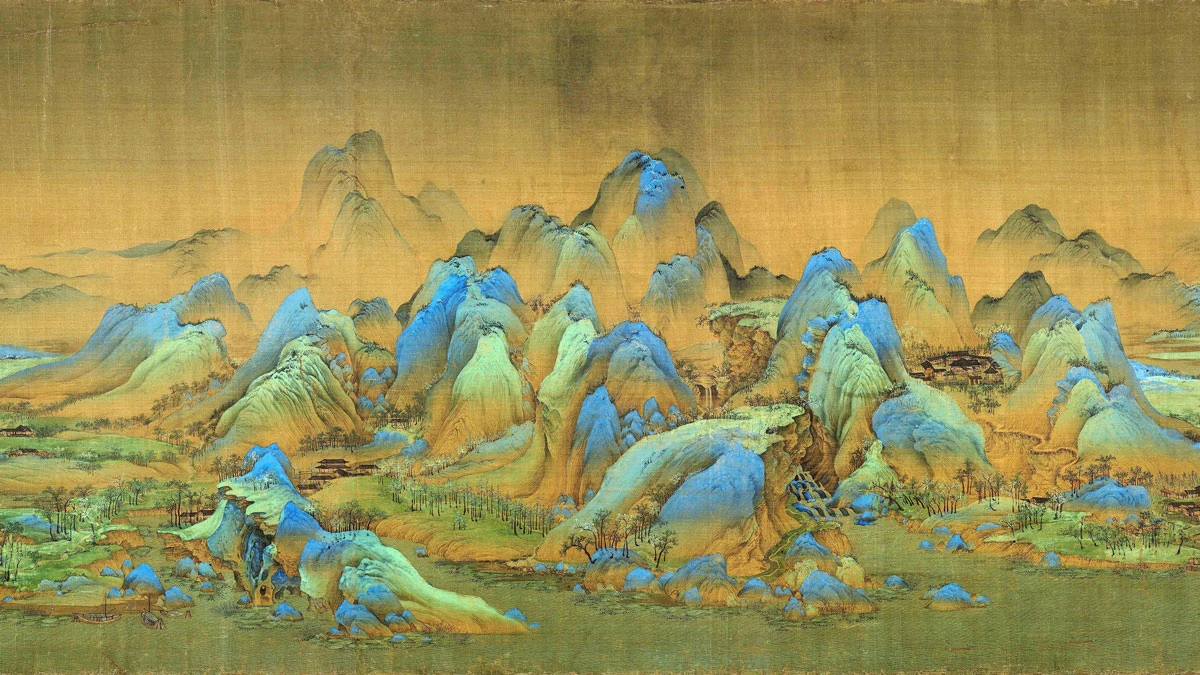
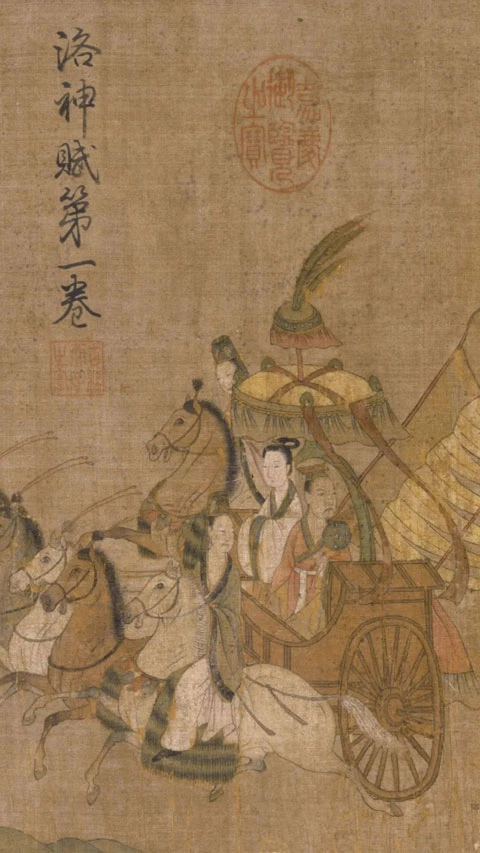
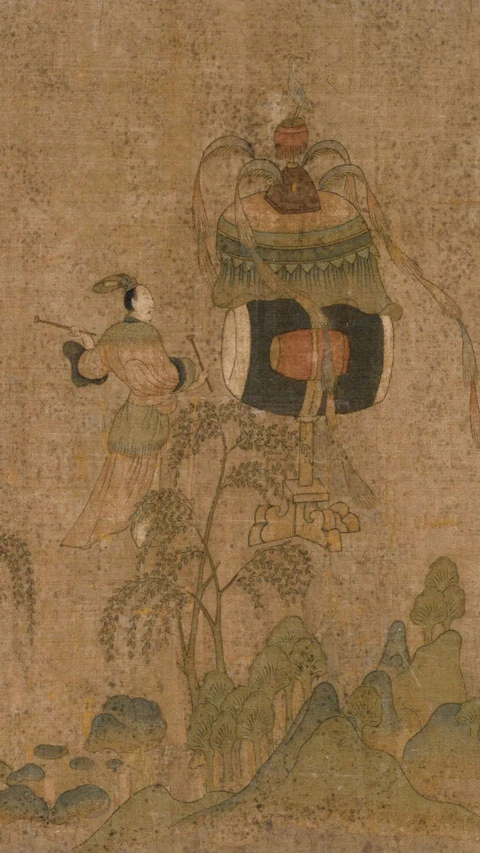
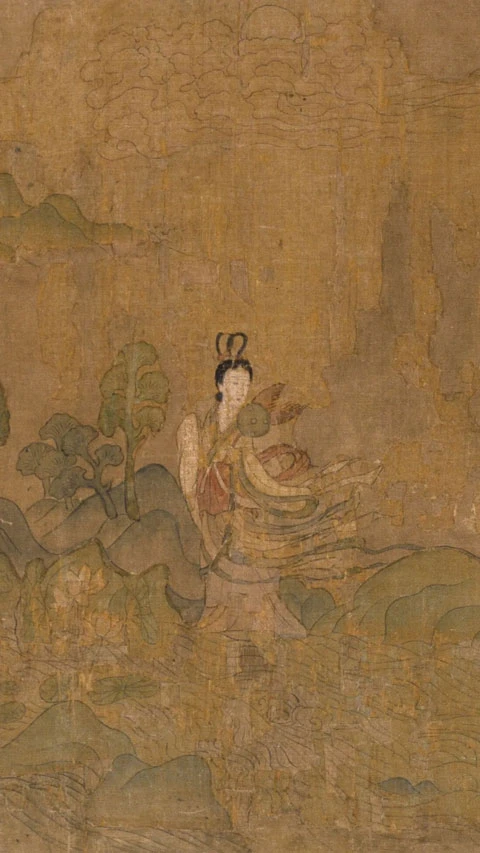
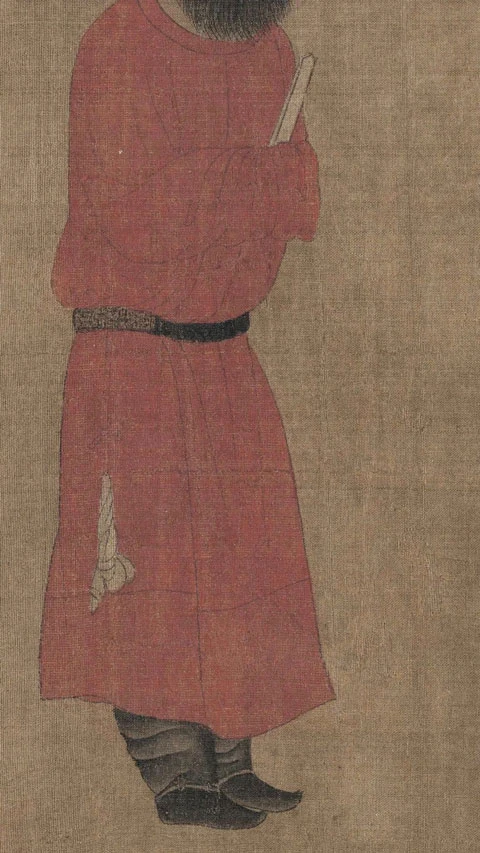
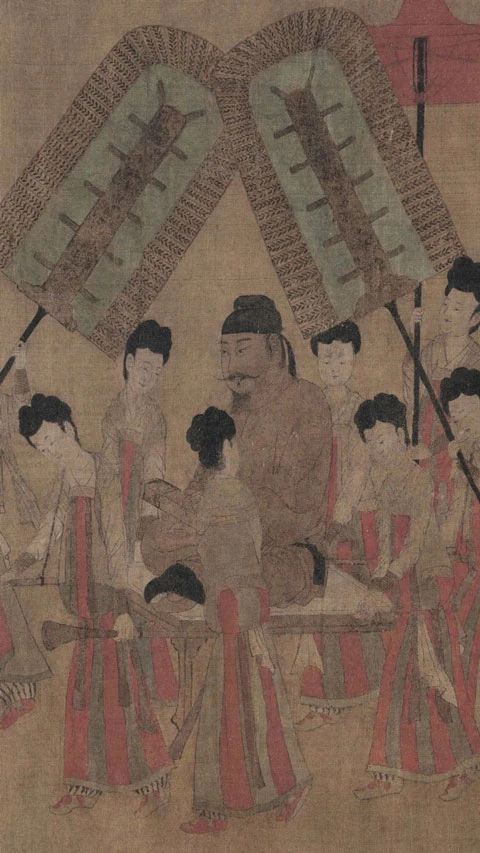
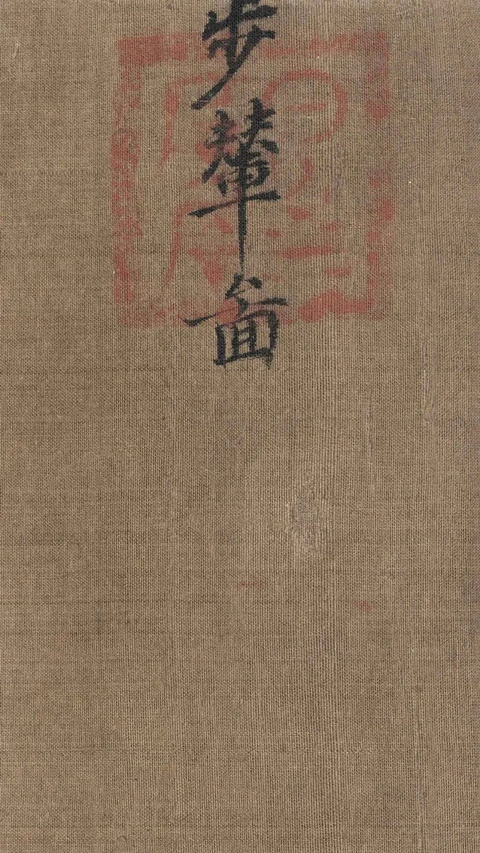
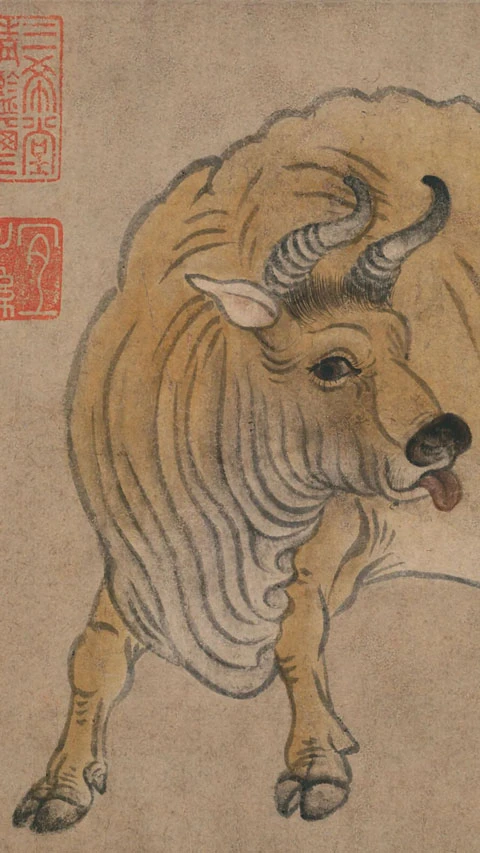
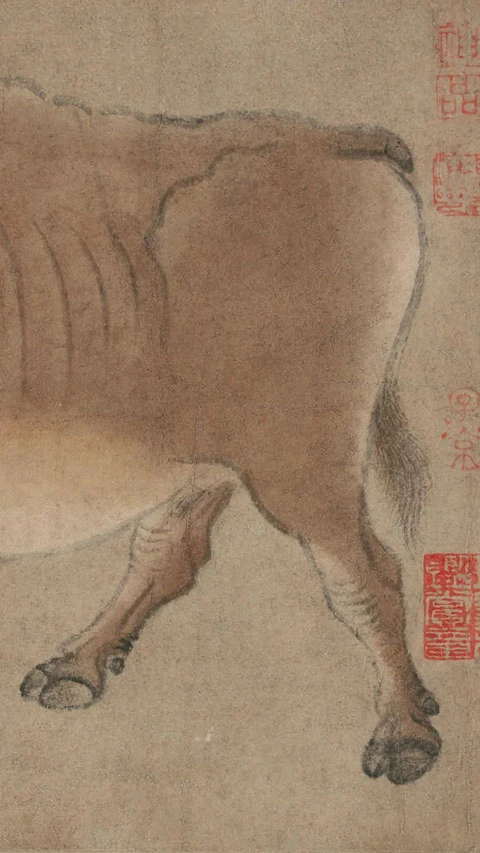
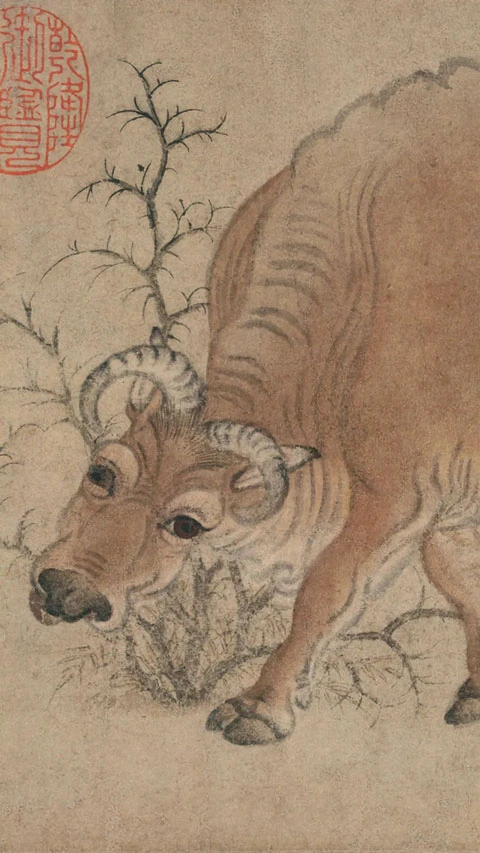
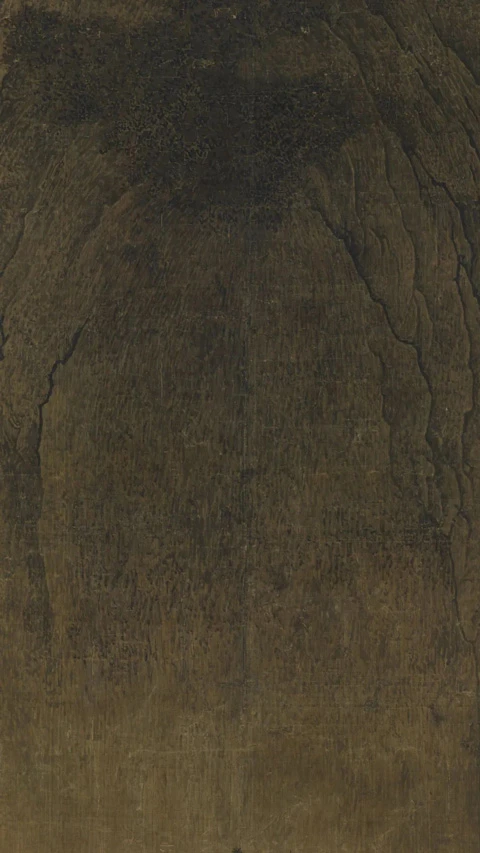
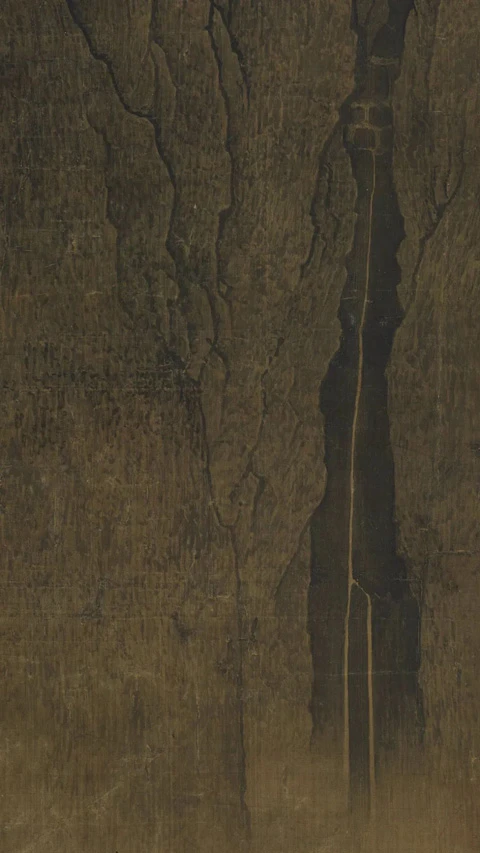
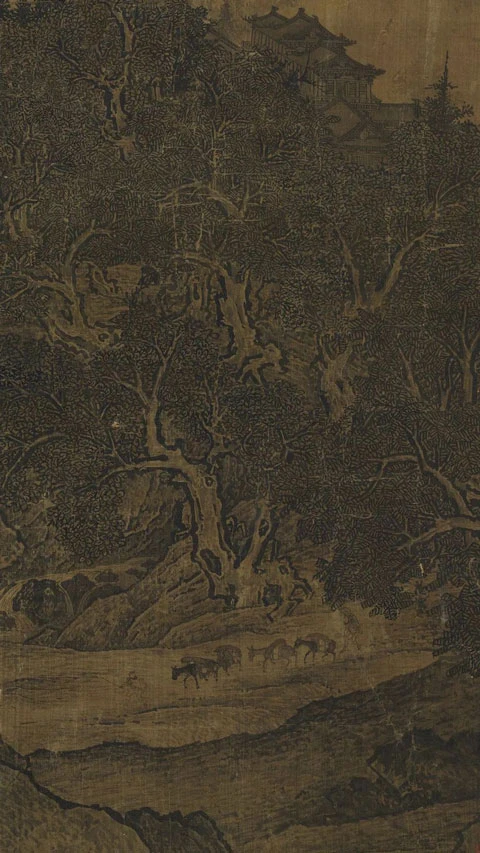
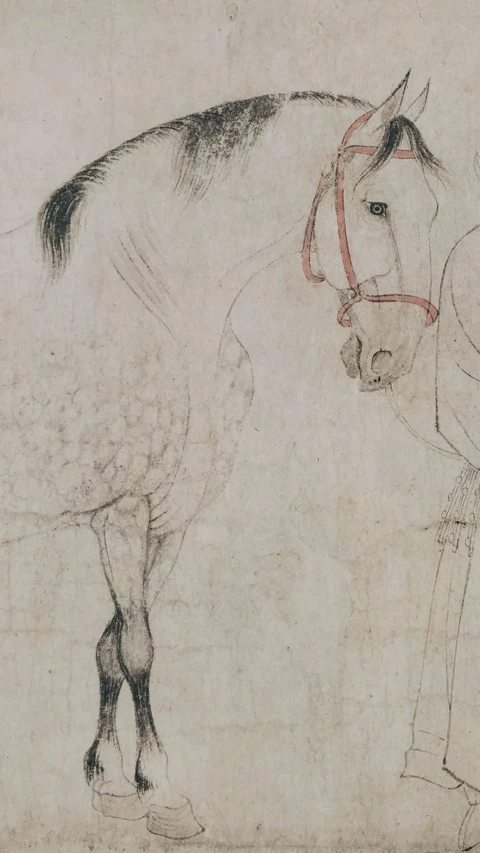
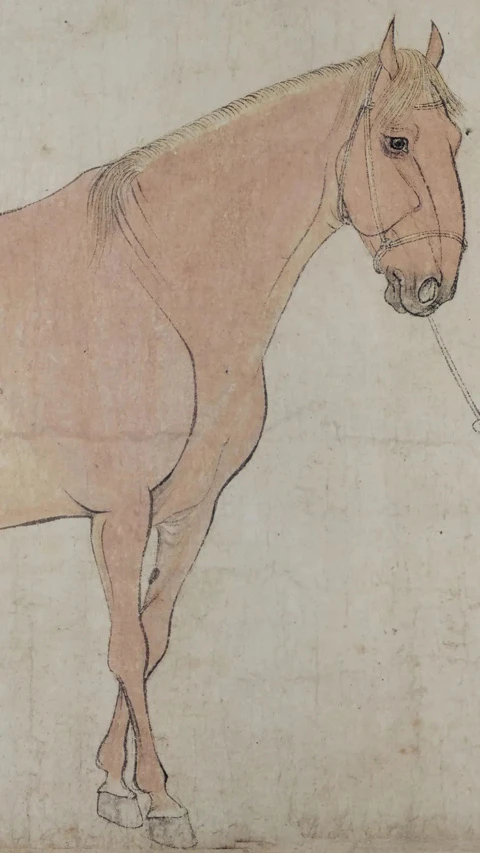
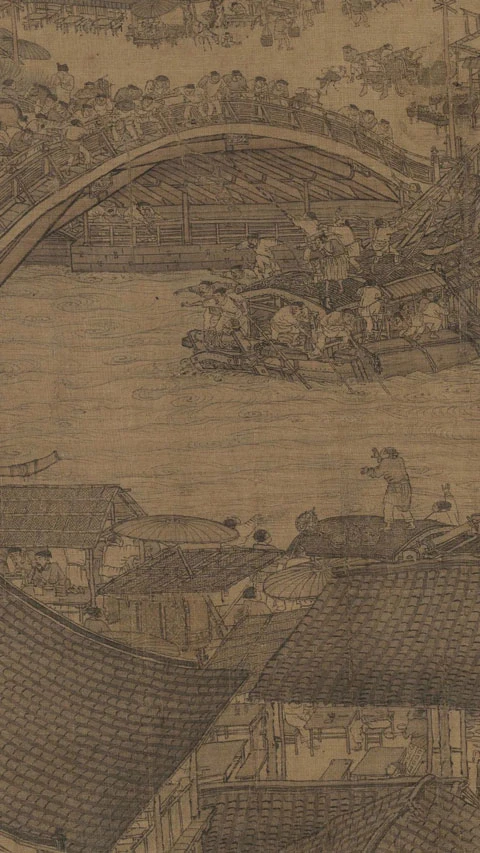
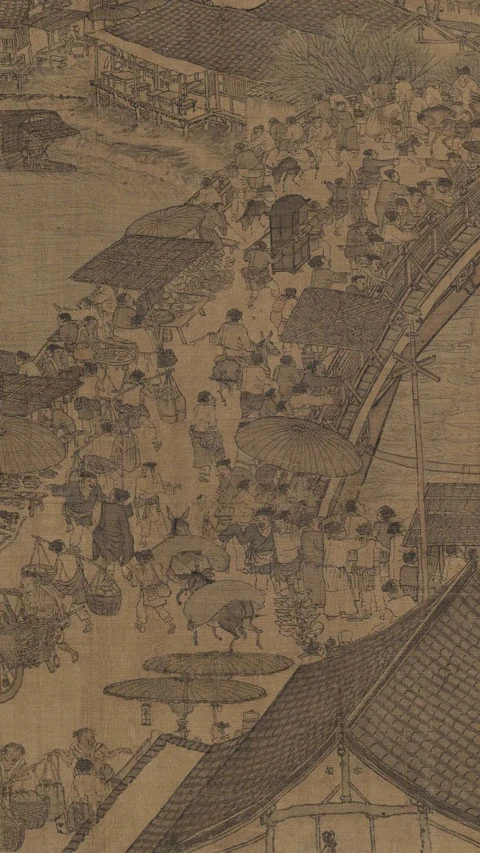
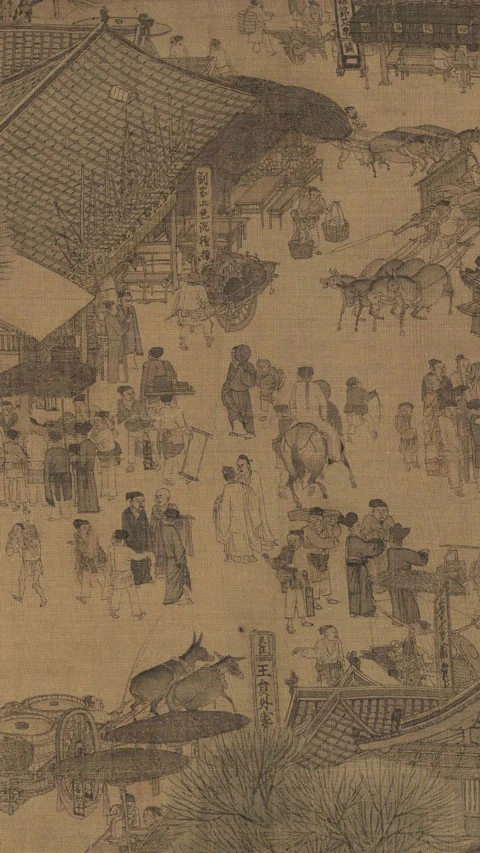
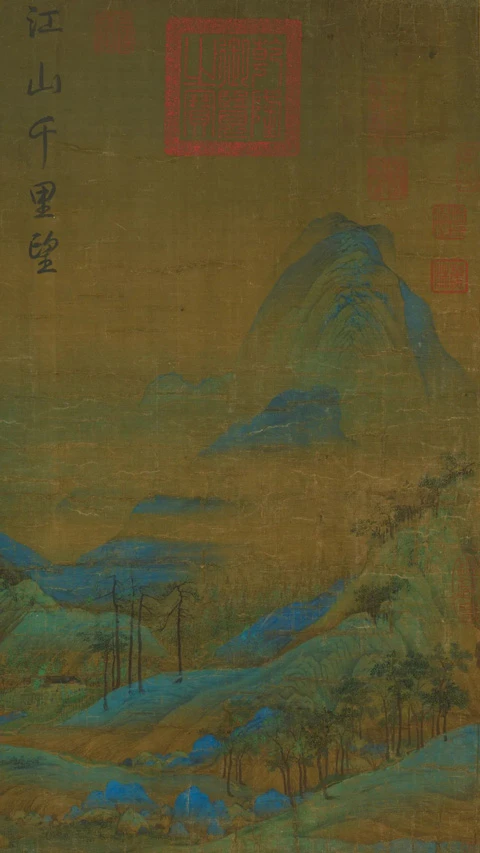
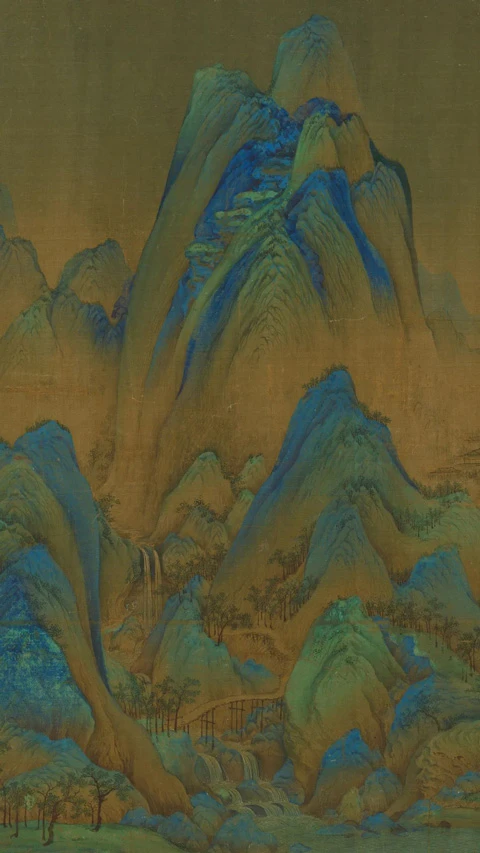
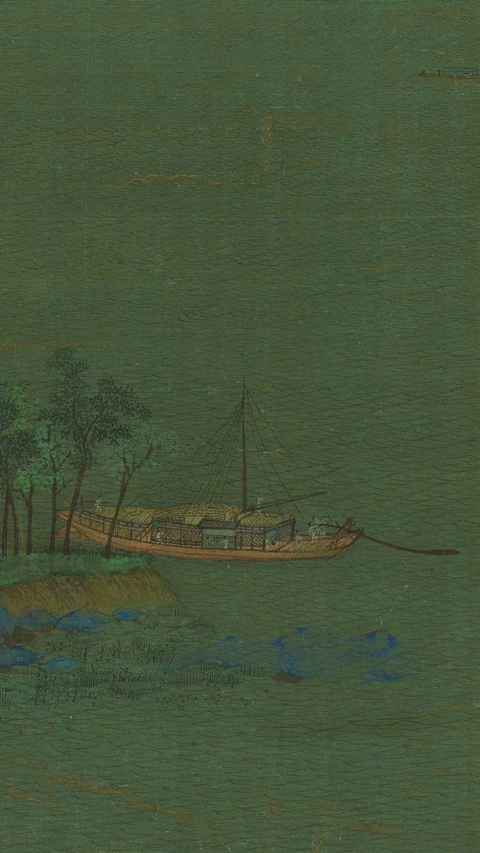
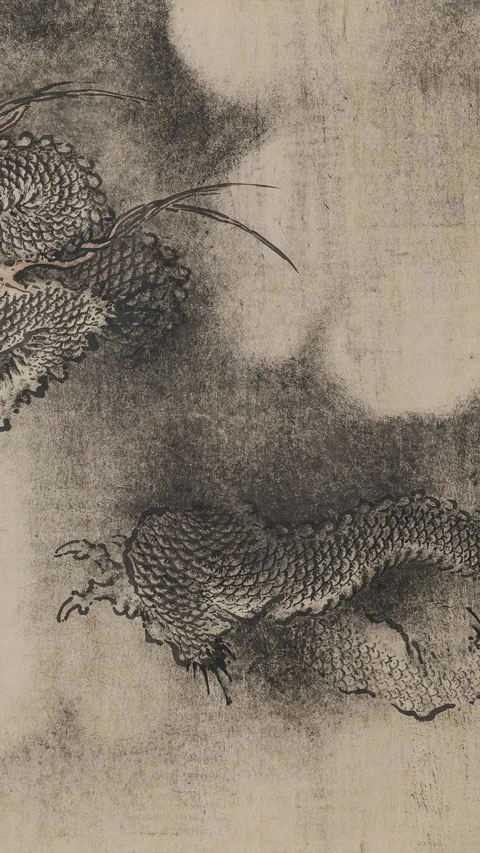
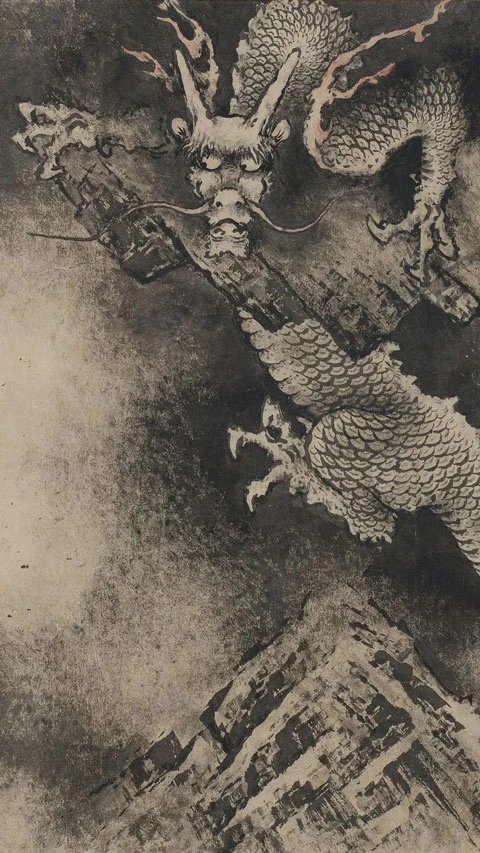
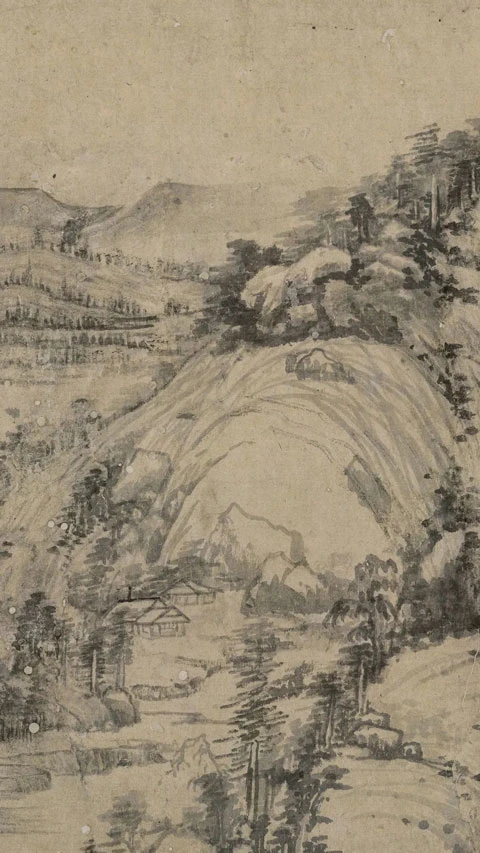
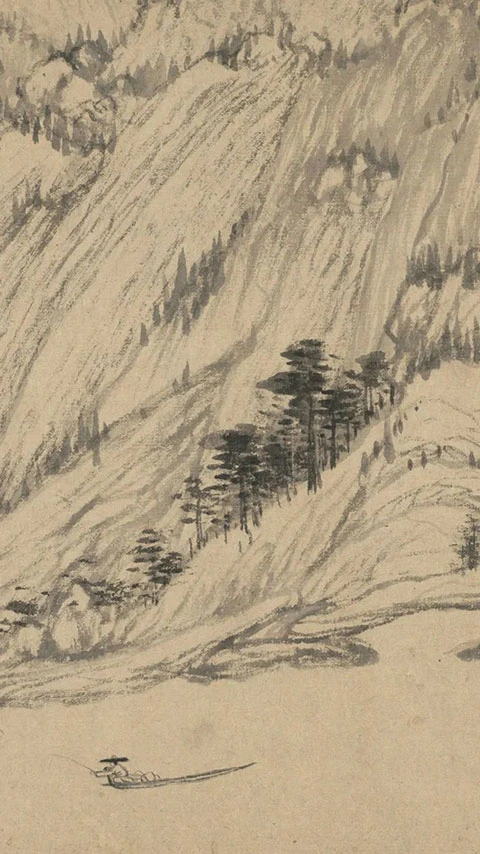
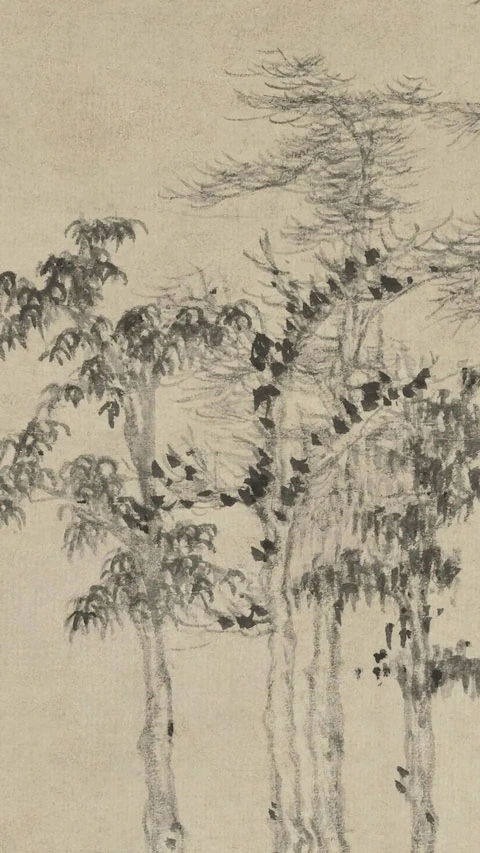
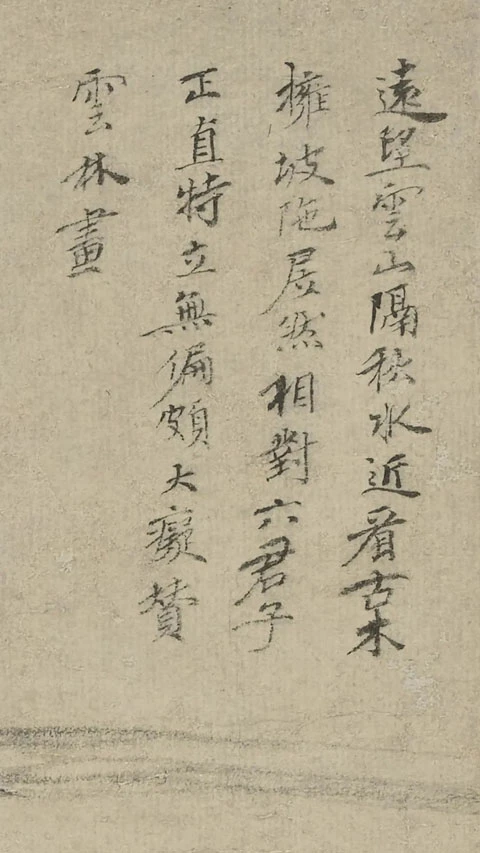


Terimakasih artikelnya
Wah sungguh kesenian yang bernilai tinggi
I have no idea how to respond. They're just beautiful, and the article definitely made them shine!
I love the showcase and details of each paintings!
thanks for such an exhaustive overview of paintings and their meaning. Are the analysis from you or from some other sources?